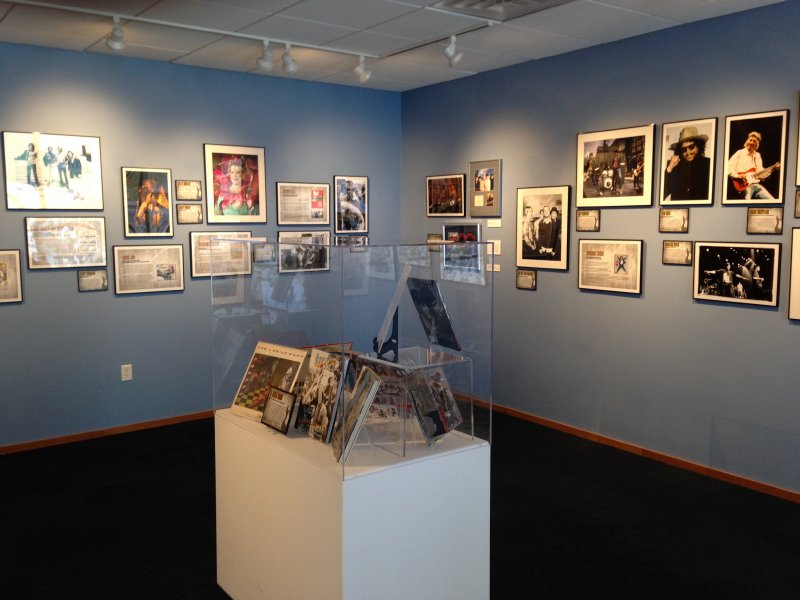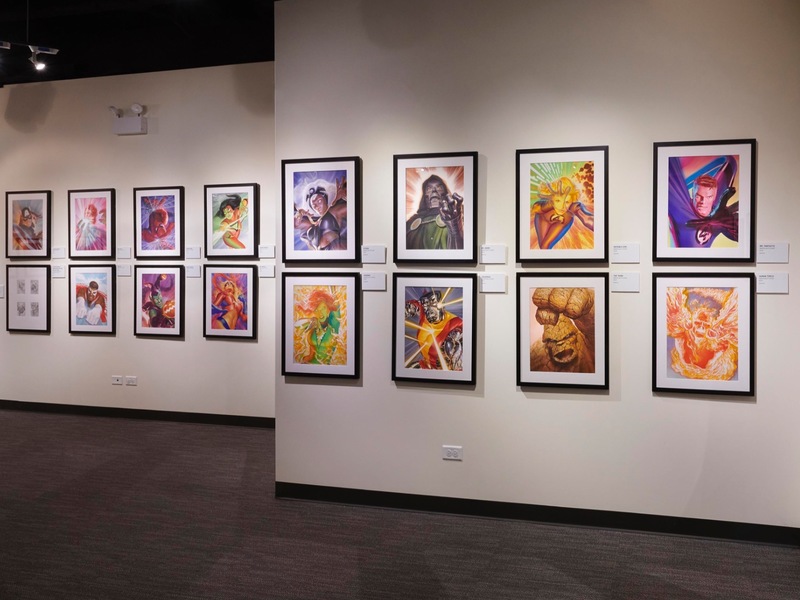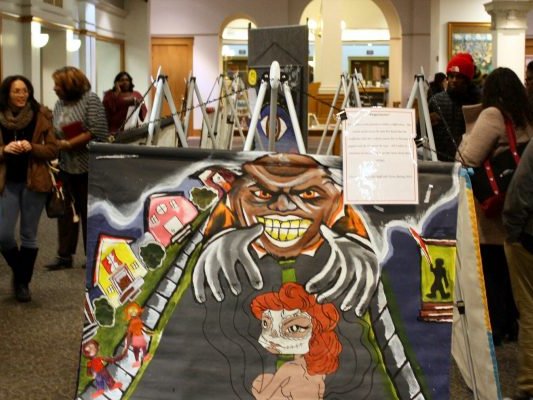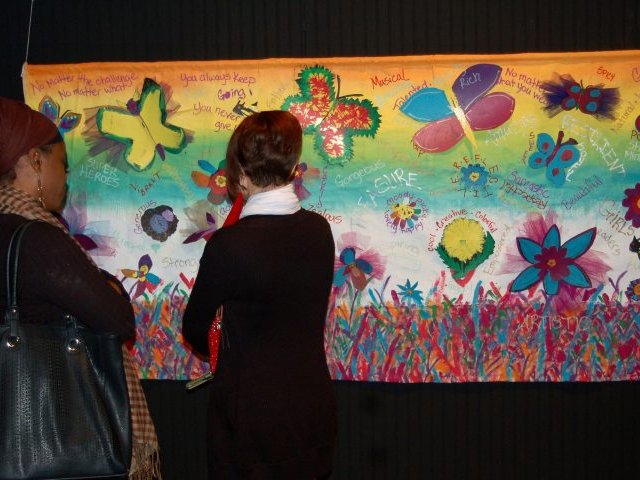The Jewish Museum Milwaukee – located inside the Helfaer Community Service Building at 1360 N. Prospect Ave. – is ready to rock.
For the last several months, the museum has been prepping and tuning up its latest exhibit – one of four temporary collections a year brought in and presented in the space at the end of its permanent exhibit. The museum’s previous exhibit in the one-room space was a showing of Andy Warhol’s "Ten Portraits of Jews of the Twentieth Century."
The new collection – "Jews Who Rock," a quick stroll through rock ‘n’ roll history and the role Jews played in its thunderous ascent to popularity opening Sunday, April 27 and running through Aug. 10 – once again looks at the overlap between Jewish culture and pop culture.
"(The temporary exhibits) can range from connected themes that give more information and expand on what we talk about in our permanent collection, or look at the continuum of the Jewish experience in more contemporary aspects," said museum curator Molly Dubin. "It really allows us to get into some other areas."
Dubin was researching and looking around for interesting ideas and themes for the follow-up to the Warhol exhibit when she came across previous "Jews Who Rock" collections. She presented it to the exhibit committee, who all agreed to go forward with the idea.
"We just all kind of felt it would resonate with such a diverse population that it was a no-brainer," Dubin said. "It’s such a celebration of Jewish culture and influence. I think it has a little bit of something for everyone. We can attract the younger audience with some of the contemporary stories and pictures, yet we also harken back all the way to Tin Pan Alley and the beginnings of rock ‘n’ roll being played on the radio."
The main portion of the exhibit features classic photos of famous Jewish musicians, rockers and industry icons alongside information about each person’s Jewish heritage, as well as their influence on the rock ‘n’ roll world. As Dubin noted, the collection features a wide range of artists from across time, from Lee Rothman, Milwaukee’s own "Daddio of the Radio" who helped bring rock ‘n’ roll to the masses back in the ’60s, to successful modern Jewish artists like rapper Drake and Vampire Weekend frontman Ezra Koenig.
Dubin worked with Victoria Rehberg of National Exhibitions and Archives LLC in New York to bring together many of the pictures for the collection. According to Dubin, similar exhibits focused on the Jewish role in rock have been on display on the East Coast, but this particular version of "Jews Who Rock" was specially customized for the Jewish Museum’s space, as well as with an emphasis on local connections and donations.
"I augmented it with local artifacts and information so it’s that much more exciting and resonant for the community," Dubin said.
Some of the local additions to the exhibit include a Mini-Moog Voyager Synthesizer, donated from a local producer in order to tribute Bob Moog, its revolutionary inventor, as well as a few notable record covers – donated by museum chairperson Kevin Kinney’s personal collection – featuring Jewish musicians and artists. The covers range from the Beastie Boys to the late Lou Reed to an MTV compilation entitled "High Priority," featuring the Bangles, as well as unfinished album art by Andy Warhol.
The local element of "Jews Who Rock" also focuses a bit on Howie Epstein, the Milwaukee-born former bassist for Tom Petty and the Heartbreakers who tragically died from a drug use complications back in 2003. In addition to his story being told in the exhibit, Epstein’s family donated some elements to the Jewish Museum Milwaukee, including one of the bassist’s limited edition bass guitar – which is on display in a protective case in the museum’s main atrium.
It’s all made to pay tribute to these Jewish musicians and innovators that helped transform pop culture and therefore history. The exhibit isn’t simply for star-gazing, however; the museum also hopes to link the Jewish people’s role in rock ‘n’ roll to Jewish history as a whole. According to Ellie Gettinger, the museum’s education director (as well as the creator of the "Jews Who Rock" playlist, which you can follow on Spotify), there are many reasons why the Jews were often drawn to the music world.
"There wasn’t a huge tradition of visual arts, but there is this long musical tradition," Gettinger said. "If you go back to the temple in Jerusalem thousands of years ago, there was essentially an orchestra or band of 12 different instruments playing. Once the temple is destroyed, you go from having a spiritual presence of instruments in a Jewish religious context to everything being done by a cantor. This person would be the emotional center of the religious experience."
While the Jewish tradition and importance of bands and singers was crucial, according to Gettinger, another significant reason for the Jews’ involvement in music and rock was essentially timing, a mixture of technological advancements in commercial music, immigration and opportunity.
"There were developments in terms of records and recording and radio, and anything that is a new industry – like music at the time – is an industry that Jews really thrive in," Gettinger explained. "There aren’t the same social barriers that you would, say, find in law. While law becomes a very significant Jewish profession, it means there are certain limits. If you’re going to become a record producer, you can do that, and there’s no industry there. You can do whatever you want, and you can build an industry without any hierarchy or barriers."
It's safe to say the industry boomed, marking an indelible chapter not only on Jewish history, but on all history for all people. An indelible chapter "Jews Who Rock" hopes to pay tribute to for a few months.
As much as it is a gigantic cliché to say that one has always had a passion for film, Matt Mueller has always had a passion for film. Whether it was bringing in the latest movie reviews for his first grade show-and-tell or writing film reviews for the St. Norbert College Times as a high school student, Matt is way too obsessed with movies for his own good.
When he's not writing about the latest blockbuster or talking much too glowingly about "Piranha 3D," Matt can probably be found watching literally any sport (minus cricket) or working at - get this - a local movie theater. Or watching a movie. Yeah, he's probably watching a movie.







